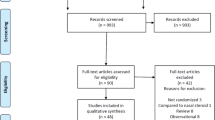Abstract
Most of the modern non-sedating H1 receptor antagonists (antihistamines) penetrate the brain poorly, allowing the use of doses large enough to counteract allergic processes in peripheral tissues without important central effects.
The antihistamines reviewed here are acrivastine, astemizole, cetirizine, ebastine, fexofenadine, loratadine, mizolastine, and terfenadine. However, these drugs are not entirely free from central effects, and there are at least quantitative differences between them.
Although psychomotor and sleep studies in healthy subjects in the laboratory may predict that an antihistamine does not cause drowsiness, the safety margin can be narrow enough to cause a central sedating effect during actual treatment. This might result from a patient's individual sensitivity, disease-induced sedation, or drug dosages that are for various reasons relatively or absolutely larger (patient's weight, poor response, reduced drug clearance, interactions).
Mild to even moderate sedation is not necessarily a major nuisance, particularly if stimulants need be added to the regimen (e.g. in perennial rhinitis). Furthermore, patients can adjust doses themselves if needed. Sedating antihistamines are not needed for long-term itching, because glucocorticoids are indicated and more effective. It is wise to restrict or avoid using antihistamines (astemizole, terfenadine) that can cause cardiac dysrhythmias, because even severe cardiotoxicity can occur in certain pharmacokinetic drug-drug interactions.
Histamine H1 receptor antagonists (antihistamines) are used in the treatment of allergic disorders. The therapeutic effects of most of the older antihistamines were associated with sedating effects on the central nervous system (CNS) and antimuscarinic effects causing dry mouth and blurred vision. Non-specific “quinidine-like” or local anaesthetic actions often led to cardiotoxicity in animals and man. Although such adverse effects varied from drug to drug, there was some degree of sedation with all old antihistamines.
Non-sedating antihistamines have become available during the past 15 years. Some of them also have antiserotonin or other actions that oppose allergic inflammation, and they are not entirely free from sedative effects either. In small to moderate “clinical” concentrations they are competitive H1 receptor antagonists, although large concentrations of some of them exert non-competitive blockade. Daytime drowsiness and weakness are seldom really important, and they restrict patients' activities less than the old antihistamines. Some new antihistamines share with old antihistamines quinidine-like effects on the cardiac conducting tissues, and clinically significant interactions have raised the question of drug safety [1]. This prodysrhythmic effect has also been briefly mentioned in comparisons of non-sedative H1 antihistamines.
Similar content being viewed by others
Author information
Authors and Affiliations
Rights and permissions
About this article
Cite this article
Mattila, M., Paakkari, I. Variations among non-sedating antihistamines: are there real differences?. E J Clin Pharmacol 55, 85–93 (1999). https://doi.org/10.1007/s002280050600
Issue Date:
DOI: https://doi.org/10.1007/s002280050600




